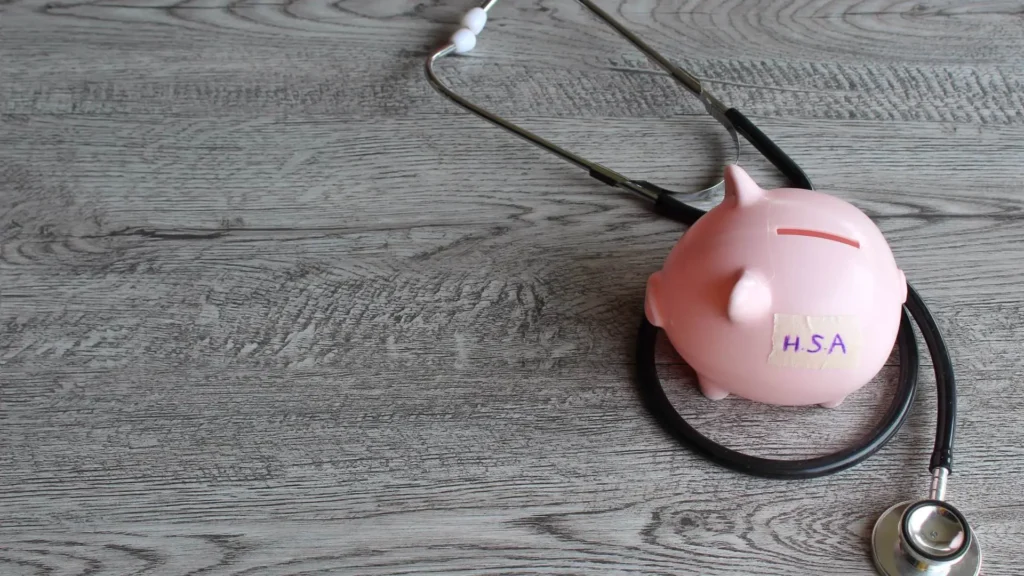Table of Contents
Life changes often directly affect your health insurance needs. People can change their health insurance coverage outside of the typical open enrollment periods when they experience a qualifying life event, or QLE. QLEs differ from the usual annual enrollment period, as they allow you to change your health plan to fit your changing life better.
QLEs ensure that people don’t have to pay extra for changing their coverage mid-year. For example, if you have a baby or lose your job-based insurance, your healthcare needs can change a lot. People would have to wait until the next open enrollment period without a QLE provision, which might leave them or their family uninsured. Qualifying Life Events: Change Coverage Without Penalties. Here’s what you need to know.
Beem is here to help you navigate these life events, which can be challenging. Beem’s platform makes it easier to find qualifying life events and compare health plans, enabling you to make informed choices about your coverage quickly and easily. You can easily update your insurance with Beem’s products without worrying about missing deadlines or incurring penalties.
Common Qualifying Life Events
Birth or Adoption of a Child
One of the most common qualifying life events is the birth or adoption of a child. Bringing a new child into your family naturally changes your healthcare needs, and the law recognizes this by allowing a Special Enrollment Period (SEP) following the event.
Tip: Typically, you have 30 to 60 days from the date of birth or adoption to update your coverage. During this time, you can add your child to your existing plan or select a new plan that better fits your expanded family. Beem’s platform can help you compare available options and ensure you select the most suitable coverage for your growing household.
Marriage or Divorce
A change in marital status is another significant life event that qualifies for benefits. Getting married or divorced affects who you may need coverage for under your health plan.
Tip: If you are getting married, you have the option to add your spouse to your plan during the SEP enrollment period. Conversely, if you are divorcing, you will need to remove your ex-spouse from your coverage. Beem simplifies this process by guiding you through the required documentation and deadlines, ensuring no gaps occur in your health insurance.
Loss of Health Coverage
Losing your current health coverage qualifies as a QLE. This can happen in several ways, including:
- Losing job-based insurance.
- Becoming ineligible for Medicaid or the Children’s Health Insurance Program (CHIP).
- Aging out of a parent’s insurance plan.
Tip: You typically have 60 days after losing your existing coverage to switch to a new health plan. Beem’s tools help you quickly identify available plans and ensure uninterrupted coverage, reducing stress during these transitions.
Moving to a New Residence
Relocating to a new area, especially to a different state, can impact the network coverage of your health insurance plan. Many plans have regional restrictions, so moving may qualify as a QLE.
Tip: This rule applies to both local moves that shift you outside your current plan’s service area and interstate moves. Beem’s platform allows you to explore plans in your new location, compare coverage, and make changes before your current plan becomes ineffective.
Change in Employment Status
Employment changes can also trigger a qualifying life event. This includes starting a new job, losing a job, or even moving from part-time to full-time employment (or vice versa) if it affects your insurance eligibility.
Tip: Beem helps you understand your coverage options based on changes in your employment. Whether you are newly eligible for employer-sponsored insurance or need to replace lost coverage, Beem guides you through the necessary steps to update your plan promptly.
When Can You Change Coverage Without Penalties?
Special Enrollment Periods (SEPs) Explained
A Special Enrollment Period (SEP) is a designated timeframe following a QLE that allows you to make changes to your health insurance without facing penalties. SEPs exist to ensure that life changes do not leave you or your family uninsured or underinsured.
Example: If you have a newborn, you can update your health insurance plan within 30–60 days after the birth. This window allows you to add your child to your coverage or choose a different plan that better suits your family’s new healthcare needs.
How Long Do SEPs Last?
Special Enrollment Periods generally last 60 days after the qualifying life event. This applies to most QLEs, including marriage, divorce, moving, and loss of coverage.
Tip: It is crucial to be aware of these deadlines. Missing the SEP could result in a coverage gap, leaving you responsible for medical expenses out of pocket. Beem’s platform helps track SEP deadlines and ensures you can take timely action to secure the right health plan.
What Happens if You Miss the SEP Deadline?
If the SEP window closes without action, you may have to wait until the next open enrollment period to update your coverage. Some exceptions exist for extenuating circumstances, but these are limited and often require additional documentation.
Tip: Acting promptly is essential. Beem’s tools provide reminders and guidance for each qualifying life event, helping you avoid missed deadlines and potential penalties.
How to Change Your Coverage After a Qualifying Life Event
Step 1: Understand Your Health Insurance Options
The first step in changing coverage after a QLE is to review your current health plan. Assess whether your existing coverage still meets your needs. Life events, such as the birth of a child, a new marriage, or a job change, may necessitate more comprehensive coverage, different networks, or additional dependents.
If your current plan no longer aligns with your needs, explore other options. Beem enables you to compare multiple health plans side by side, ensuring you can find a plan that fits your unique circumstances without the hassle of navigating multiple websites or insurers individually.
Step 2: Gather Necessary Documentation
Documentation is key when updating health insurance during a QLE. Typical documents include:
- Birth certificates for newborns.
- Adoption records.
- Marriage certificates or divorce decrees.
- Proof of job loss or employment changes.
Tip: Beem provides checklists and reminders for all necessary documents, helping you stay organized and reducing the risk of delays when submitting your plan change request.
Step 3: Submit Your Request for Plan Changes
Once you have selected a new plan or adjusted your current plan, submit your request through your insurance provider or Beem’s partner network. Ensure all required documentation accompanies your submission to avoid processing delays.
Tip: Beem simplifies this step by providing a platform to compare plans and submit change requests efficiently, making the process quicker and less stressful.
Step 4: Follow Up and Confirm Coverage Changes
After submitting your request, follow up with your insurer to confirm that your coverage changes have been processed correctly. This step is vital to ensure that your dependents are covered and that there are no lapses in your health insurance.
Tip: Beem enables you to track submissions and follow-ups, ensuring your coverage updates are finalized without unnecessary delays.
How Beem Helps You Navigate Mid-Year Coverage Changes
Mid-year changes to health coverage can be daunting, but Beem is designed to simplify the process. The platform helps users track their qualifying life events and provides timely reminders for upcoming Special Enrollment Periods. Beem also offers real-time comparisons of available health plans, making it easy to identify options that best suit your new needs. Whether you are adding a child, losing coverage, or relocating, Beem provides the tools to act quickly, efficiently, and without penalties.
Explore the Beem Health insurance comparison portal to track and update your coverage with ease.
Conclusion
Qualifying Life Events and Special Enrollment Periods are critical tools for maintaining adequate health coverage throughout life’s changes. Acting promptly during a QLE ensures you avoid penalties, prevent gaps in coverage, and secure the right plan for your family. Beem simplifies the entire process by tracking your QLEs, providing reminders for SEPs, and offering side-by-side plan comparisons.
By leveraging Beem’s platform, you can confidently navigate mid-year health insurance changes, stay on top of deadlines, and choose coverage that truly fits your evolving needs. Use Beem to make health plan updates seamless and stress-free. Download the app here.
FAQs for Qualifying Life Events: Change Coverage Without Penalties
Can I change my plan after a QLE if I miss the SEP deadline?
Generally, missing the SEP deadline means waiting until the next open enrollment period to make changes to your coverage. Some exceptions may apply for unusual circumstances, but these are rare.
How do I know if my life event qualifies for an SEP?
You can verify with your insurance provider or use Beem’s platform, which guides you in identifying whether a life event qualifies for a Special Enrollment Period.
Do I incur a penalty if I miss my SEP deadline?
Yes, missing the SEP deadline could result in a penalty and gaps in coverage. It is crucial to act within the timeframe to avoid these issues.
Can Beem help me find the best plan after a QLE?
Absolutely. Beem allows you to compare multiple health plans and select one that aligns with your needs after a qualifying life event. The platform also provides reminders and support throughout the process.















































